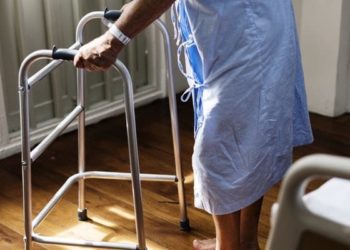Moderate exercise program aids mobility in elderly
Image: PD
1. Moderate physical activity reduced the risk of mobility disability in those ages 70-89.
2. A structured physical activity program may be effective in prolonging independent living in elderly individuals.
Evidence Rating Level: 1 (Excellent)
Study Rundown: As medical science continues to advance every year, as does our average life expectancy. Consequently, the elderly are spending more time in the most difficult part of their lives. During this later part of life, the ability to live independently is of particular importance. Living independently heavily depends on one’s ability to ambulate and be mobile without assistance. Exercise has been shown to improve our lives in countless ways yet older individuals are those exercising the least. Therefore, the authors of this study set out to determine whether a structured physical activity program can prevent or delay the onset of mobility disability in this population.
It was found that a moderate intensity physical exercise program compared to a successful aging workshop program is able to reduce mobility disability over the course of 2.6 years in a population with a mean age of 78.9 years. Strengths include this study being the first of its kind, a large sample size of older individuals, and a prospective, randomized design. Major limitations include the possibility of a number of participants self-referring themselves into the study, limiting its reproducibility, and the short 2.6-year follow up period. While it is commonly known exercise helps keep us healthy, we are still unsure of its effects on the mortality of deconditioned, susceptible older adults and more research is needed into this particular cohort.
Click to read the study, published today in JAMA
Relevant Reading: A national agenda for research on aging
In-Depth [randomized controlled trial]: This study recruited 1653 participants aged 70-89 from 8 centers across the United States between 2010-2011. 818 were randomized to the physical activity group and 817 to a health education program. The physical activity group maintained an average of 218 min/wk in walking and weight training while the education group maintained an average of 115 min/wk. Major mobility disability was experienced by 246 participants (30.1%) in the physical activity group and 290 participants (35.5%) in the health education group (HR, 0.82 [95% CI, 0.69-0.98]. Persistent mobility disability was experienced by 120 participants (14.7%) in the physical activity group and 162 participants (19.8%) in the health education group (HR, 0.72 [95% CI, 0.57-0.91]; P = .006). Adverse events occurred in 404 (49.4%) of participants in the physical activity group and in 373 (45.7%) participants in the health education program (RR 1.08).
More from this author: Reducing surgical complications may increase costs,Protected sleep periods improve intern alertness and sleep duration,ADHD medication decreases rates of criminality in ADHD patients,Low dose aspirin shows net clinical benefit in patients with first unprovoked venous thromboembolism, Rare TREM-2 mutation implicated in Alzheimer’s Disease
©2012-2014 2minutemedicine.com. All rights reserved. No works may be reproduced without expressed written consent from 2minutemedicine.com. Disclaimer: We present factual information directly from peer reviewed medical journals. No post should be construed as medical advice and is not intended as such by the authors, editors, staff or by 2minutemedicine.com. PLEASE SEE A HEALTHCARE PROVIDER IN YOUR AREA IF YOU SEEK MEDICAL ADVICE OF ANY SORT.







